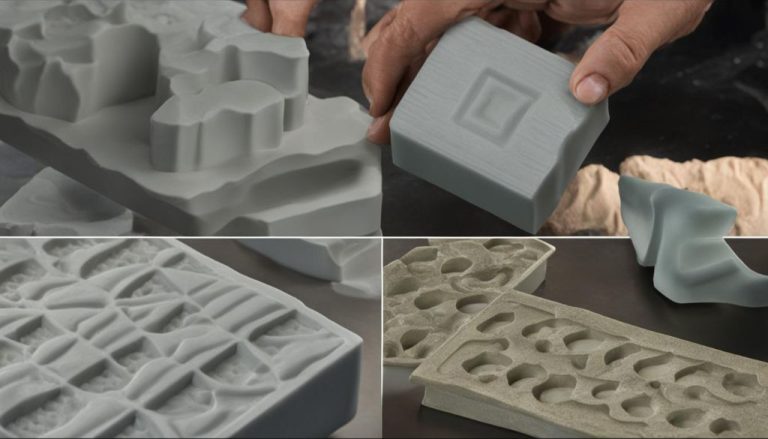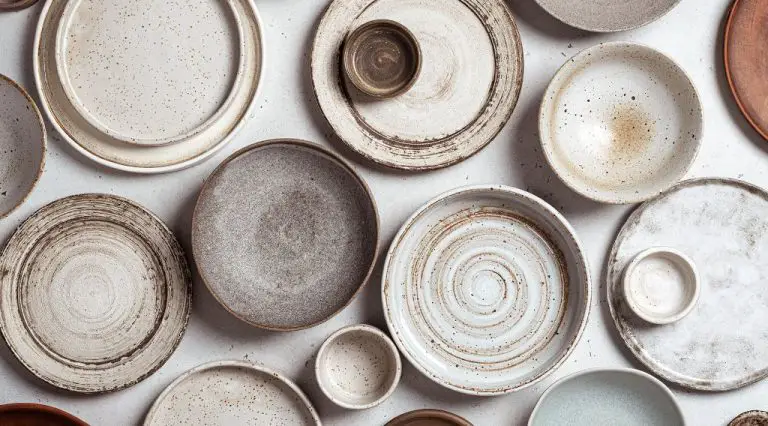What Do You Mix With Powdered Clay To Make Moist Clay?
Making jewelry, sculptures, or other works of art from clay can be a fun and rewarding hobby. However, sometimes clay may come in a powdered or dried form that requires some additional ingredients to moisten it back into a pliable modeling compound.
Adding moisture is a key step when working with dried or powdered clay. Without proper moisture, the clay will remain dry and brittle, making it very difficult or impossible to model into intricate shapes and designs. The right amount of moisture allows the clay particles to move against each other without crumbling, enabling the clay to be shaped, molded, sculpted and transformed into beautiful creations.
Water
Water is the most common additive for powdered clay. It is typically mixed with powdered clay in order to rehydrate it and make it malleable again. The amount of water needed will depend on the specific type of clay being used as well as the desired consistency.
For example, polymer clay typically requires about 1 teaspoon of water per 1 ounce of clay, while air-dry clays need anywhere from 1/4 cup to 1/2 cup of water per 2 pounds of clay. The more water that is added, the softer and more workable the clay will become. Start by mixing in water gradually until the clay forms into a smooth, pliable ball that is not sticky to the touch.
Water brings the clay particles together and allows them to be shaped, while still retaining their form once dry. Too much water can make the clay sticky and difficult to handle. Not enough water will result in a clay that cracks easily when shaped. Finding the right consistency is key for working with moist clay.
Glue
Some clays use glue instead of water to achieve different properties. The most common glues used are white PVA glue and tacky glue. Using glue instead of water will make the finished clay more flexible and less likely to crack when baking. However, it also makes the clay softer and stickier to work with. Glues like PVA or tacky glue add plasticizers to the clay that keep it malleable. The tradeoff is that pieces made with glue may not hold their shape as precisely. Glues can also introduce bubbles into the clay that form during baking. Overall, glue allows more freedom when sculpting, but may require extra effort to smooth surfaces and achieve sharper details.
Oil
Adding oil is a great way to make clay more flexible and workable. The oil helps keep the clay from becoming too brittle as it dries. This makes oil-mixed clay ideal for sculpting detailed objects or items that need thin extremities like fingers, tails, beaks, etc. The oil allows you to extend and manipulate the clay longer before it hardens.
Common oils used to mix with clay are linseed oil and mineral oil. Linseed oil is derived from flax seeds and provides good flexibility. Mineral oil is a petroleum byproduct, inexpensive, and also works well to extend clay workability.
The amount of oil added depends on the existing clay properties and how flexible you need it to be. Start with a few drops per pound of clay and knead it in. You can continue adding small amounts of oil until you achieve the desired malleability.
Glycerin
Glycerin is a popular choice for softening polymer clay. It helps keep the clay malleable and workable without becoming overly sticky. Glycerin adds flexibility to polymer clay while still allowing it to retain fine detail. This makes it an ideal softening agent when working on intricate sculpting or modeling projects.
Glycerin is hygroscopic, meaning it attracts moisture from the air. When added to polymer clay, the moisture helps keep the clay soft and flexible. However, glycerin won’t make the clay become soggy or difficult to handle like too much water can. The moisture retains within the clay rather than making the surface tacky.
Glycerin allows the clay to bend and stretch without becoming misshapen. This makes it great for sculpting figures, delicate floral pieces, jewelry pendants, beads, and any item requiring an elasticity to hold shape while working. Glycerin brings out polymer clay’s natural flexibility without compromising ease of use.
Vinegar
A few drops of vinegar keep clay workable by allowing the clay to remain moist and flexible. The acetic acid in vinegar reacts with the clay particles, preventing the clay from drying out too quickly. This makes the clay easier to manipulate and shape.
However, too much vinegar can cause the clay to become brittle once it dries. Vinegar makes the clay more acidic, and excessive acidity damages the clay structure. Using more than a couple drops of vinegar per portion of clay can leave air pockets that weaken the clay, causing it to crack or crumble when dried. Moderation is key when adding vinegar to clay.
Liquid Polymer Clay
Liquid polymer clay (also known as LPC) is another popular option to mix with powdered clay to create moist clay that is easy to mold and shape. LPC is a pourable, liquid form of polymer clay that has similar properties to solid polymer clay but with a more fluid consistency. The main benefit of mixing LPC with powdered clay is that it adds flexibility and bonding power to solid clay.
Once mixed with powdered clay, LPC acts as a plasticizer to make solid clay more pliable so it can bend without cracking or breaking. LPC fills in the spaces between clay particles to create a smooth, workable texture that still holds its shape. It gives clay more flexibility compared to just mixing with water. The liquid polymer chains bind solid clay particles together and help reduce brittleness. This makes LPC-infused clay ideal for creating detailed shapes, attaching clay pieces, and achieving intricate effects.
Another advantage of LPC is that it can substitute glue when attaching clay components. Rather than using a separate glue adhesive, LPC bonds clay surfaces together as it cures. Just spread a thin layer of LPC between two clay pieces, hold them together for 30 seconds, and the LPC will fuse them tightly. This unique bonding ability makes LPC a versatile clay additive for complex sculpting and modeling projects.
Baby Oil
One popular choice for conditioning clay is baby oil, which is a light mineral oil. Baby oil makes clay smooth and flexible to work with. The oil seeps into the clay particles, helping to lubricate them and prevent them from sticking together. This gives clay a silky feel and allows you to knead, shape, and sculpt the clay without it cracking or crumbling.
Baby oil is an affordable option that can be found at any drugstore or grocery store, making it easily accessible. Many artists keep a bottle handy specifically for conditioning their polymer clay, modeled clay, or homemade clay mixtures. A small amount of baby oil goes a long way in improving the workability of clay. Just a few drops into the clay while kneading it in will give clay the right moisture and flexibility for sculpting detailed pieces.
The light oil in baby oil helps lubricate the clay particles for smooth flexibility without making the clay overly sticky. Heavier oils can make clay tacky and difficult to work with. Baby oil gives just the right amount of slip and conditioning. The oil also helps prevent clay from drying out too quickly while working on sculptures.
For these reasons, baby oil is a top choice for conditioning clay. It’s readily available, inexpensive, and gives clay the ideal smooth, workable consistency for crafting and sculpting without being overly oily or sticky.
Cornstarch
Cornstarch is another common household ingredient that can be mixed with polymer clay to reach an optimal consistency. Adding a small amount of cornstarch will help absorb any excess moisture in the clay.
Polymer clay can often become sticky or soft during the sculpting process, making it difficult to work with. Mixing in a sprinkle of cornstarch will reduce stickiness so the clay is easier to handle and manipulate into intricate shapes and designs.
It’s important not to add too much cornstarch, however, as overdoing it can lead to clay that is too dry and brittle. Use cornstarch sparingly, starting with just a pinch at a time until the desired texture is achieved. Too much cornstarch will weaken the clay’s structure, causing finished pieces to be more prone to cracking or breaking.
Cornstarch is an excellent way to adjust the consistency of polymer clay without compromising its sculptability. With the right amount, clay artists can create anything from delicate jewelry to detailed figurines with smooth, flawless finishes.
Conclusion
There are several common household liquids that can be used to moisten clay and achieve different textures and properties.
The most popular and readily available option is water. Adding small amounts of water softens clay and makes it malleable without making it overly sticky. Too much water can weaken clay structures when dried.
Glue and glycerin add flexibility and prevent cracking in dried clay. Oil gives clay a smooth, slippery feel and longer working time before drying. Vinegar can help condition clay and prevent stickiness.
Liquid polymer clays keep moisture in clay and create durable, flexible pieces after baking. Baby oil allows clay to be reworked over multiple sessions before drying out.
Cornstarch is a powder additive that absorbs moisture to reach ideal clay consistency without making it overly wet.
When mixing clays, add liquid in small increments, kneading thoroughly between additions for even moisture distribution. Test consistency and modify as needed. Allow clay to rest before sculpting for moisture to fully absorb.
Explore mixing different liquids to achieve novel clay textures for creative crafts and jewelry making. The options are endless!



